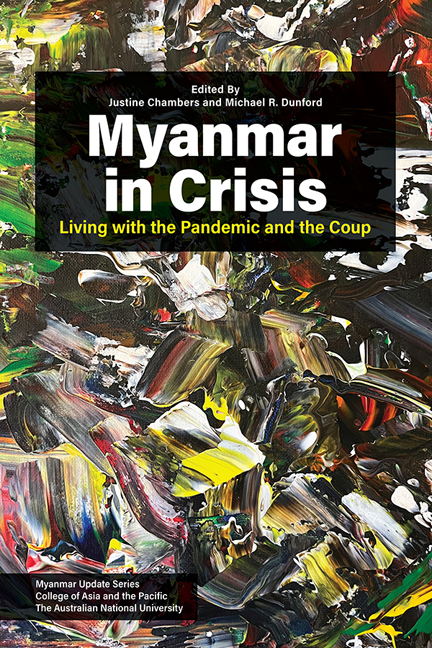6 - Contested Political Authority in Post-Coup Myanmar
Published online by Cambridge University Press: 01 March 2024
Summary
The attempted coup of February 2021 by the State Administration Council (SAC) has catalysed dramatic shifts in Myanmar's political and security landscapes. As the SAC has failed to assert its political authority, new governance systems have emerged under the National Unity Government (NUG) and a range of local level revolutionary coalitions. Meanwhile, ethnic resistance organisations (EROs) both aligned and non-aligned to the NUG, have been able to expand their areas of control.
This chapter examines the ways that political authority is established by competing actors in the context of Myanmar's post-2021 civil war and explores the implications of emerging governance dynamics for the country's future. I draw on a range of concepts from the international literature to highlight the importance of political authority and governance for the resistance movement's immediate struggle to take down the military junta and for its long-term agenda of establishing a lasting, peaceful, federal democratic union of Myanmar.
The governance systems of Myanmar's many resistance organisations have not gained significant academic attention until recent years, despite large areas of the country having been governed by them for many decades. The political authority and governance systems of resistance organisations are only mentioned in passing in the most influential studies on armed conflict and ethnic politics in Myanmar (Yawnghwhe 1987; Gravers 1999; Lintner 1999; Smith 1999; Thawnghmung 2007; Callahan 2007; South 2008; Sakhong 2010; Woods 2011; Sadan 2013). But recent years have seen increased interest in these themes, with Brenner (2017; 2019) exploring the politics and governance of so-called “rebels”, South (2017) discussing “hybrid governance” and Kyed et al. (2020) providing a seminal contribution on informal justice systems in both ERO and government-controlled areas (see also Decobert 2016; Paul 2018; Loong 2019; Ong 2020; and Kim 2021, among others). These recent works have demonstrated how large populations of the country have been subject to overlapping forms of localised authority completely independent from the central state. They have also demonstrated how the governance systems of EROs often demonstrate considerable legitimacy, especially in relation to the violent and invasive Myanmar Armed Forces, due to bottom-up collaboration between EROs and community-based actors.
- Type
- Chapter
- Information
- Myanmar in CrisisLiving with the Pandemic and the Coup, pp. 125 - 158Publisher: ISEAS–Yusof Ishak InstitutePrint publication year: 2023

